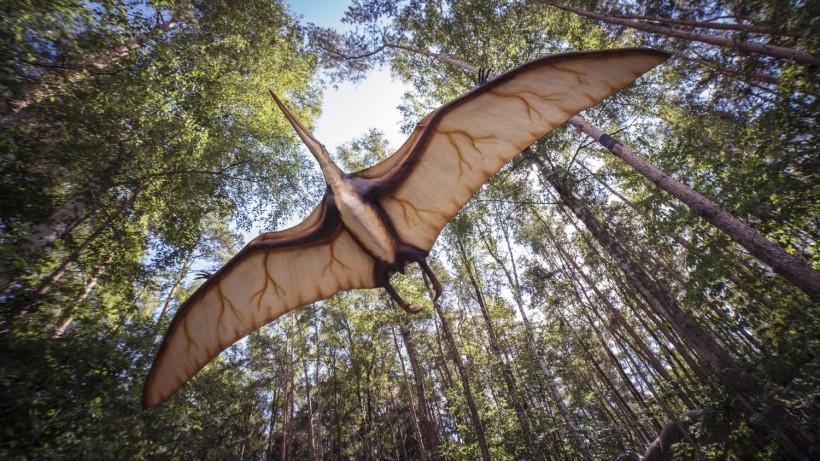During the latter parts of the Jurassic period, a pterosaur with a peculiarly shaped bill that had a line of hundreds of small and hooked teeth explored the waters of present-day Bavaria. Live Science notes how this extinct animal may have gobbled up their marine prey as they waded through prehistoric lakes and ponds in a way that is similar to how flamingos gobble up their food.
Unique Pterosaur Species
According to the Verve Times, this species was serendipitously unearthed within an abandoned mine within the Franconian Jura of Bavaria, which is a "hotspot" for fossils of this kind. In attempts to uncover bones of crocodiles within a slab of limestone, the researchers came across this novel specimen that was remarkably preserved. In fact, the skeletal remains were almost complete and had ligaments that were intact.
Live Science notes how the remains could be 152 to 157 million years old. Such figures are based on the sediments that surround it.
The researchers described this newly discovered species as having remarkable features that made it different from other pterosaur species.
Pterosaurs, specifically, were reptiles that flew and were bird-like. They were dinosaur cousins and traversed the skies during Mesozoic times.
Pterosaur With 480 Teeth Ate Like a Flamingo
According to Live Science, paleobiologist David Martill from the University of Portsmouth notes how this pterosaur's jaws are quite long and are lined with hooked teeth that are small and fine and that have small spaces between each one. The bill of the creature also had a similar shape to the spoonbills of today that belong to the Platalea genus. Martill notes how the mouth's end does not have teeth but that there are teeth present along its jaws until right behind its smile.
The wingspan of the sample reached 1.1 meters. The study also noted that the species had 480 different teeth that had the dimensions of 0.08 to 0.43 inches. This is the second-biggest number of teeth spotted in a pterosaur.
Martill notes that its teeth's hook shape is something that was never observed in pterosaurs. Such hooks could have been used to capture shrimp and ensure that they entered the throat and didn't get squeezed between teeth.
Such an approach is quite similar to how flamingos choose algae and small crustaceans from silty or muddy water in lagoons or lakes that are shallow. What makes it distinct, however, is that flamingos do not use hooked teeth. They have bristly, small hairs known as lamellae that they use for filtering food.
Because of the pristine condition of the remains, the team were able to infer such in-depth qualities about the newly discovered species. Martill notes how its carcass may have been at a very-early decay stage, which meant that it could have been buried right after the species died.
The remains are currently displayed in Germany's Bamberg Natural History Museum.
RELATED ARTICLE: Newly Identified Species of Pterosaur Unearthed in sub-Saharan Africa
Check out more news and information on Archaeology in Science Times.















